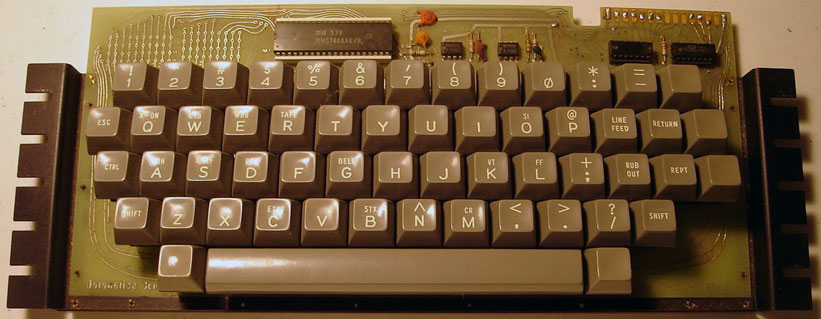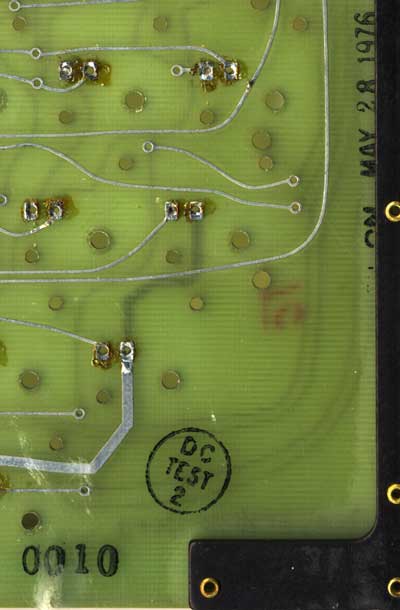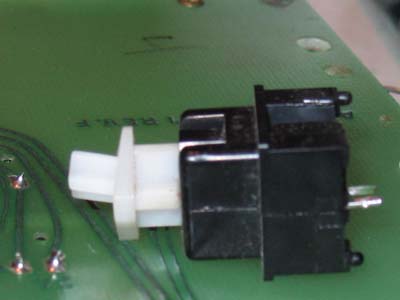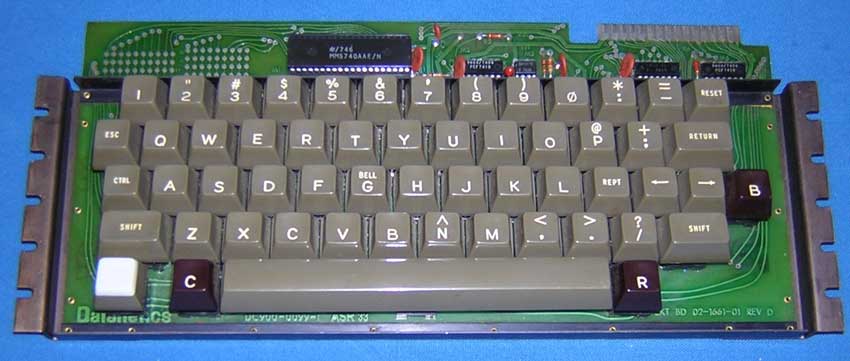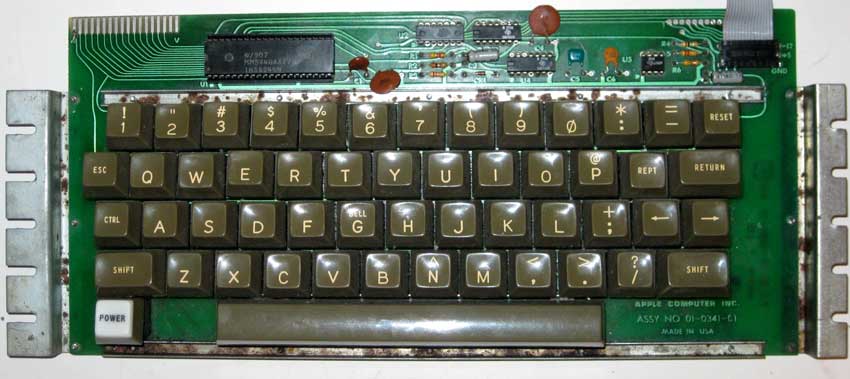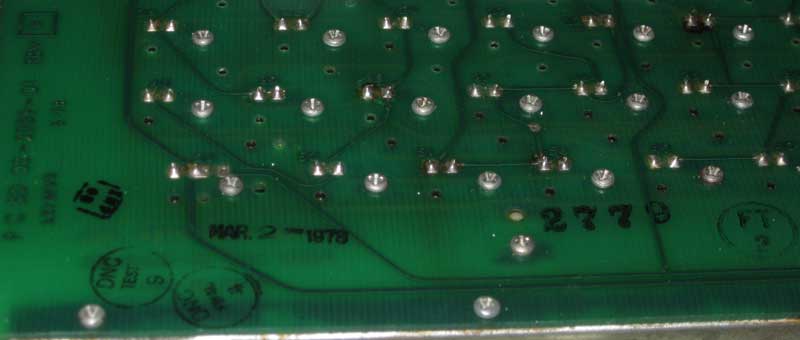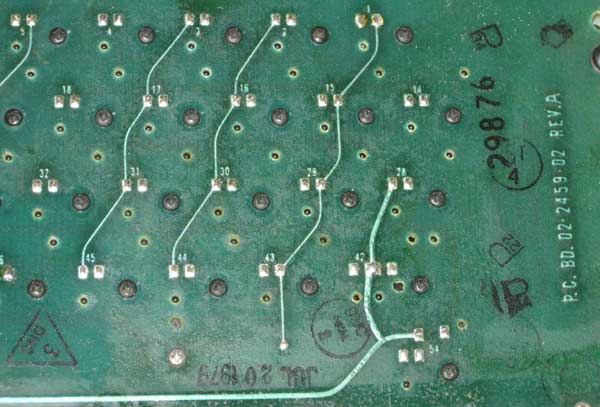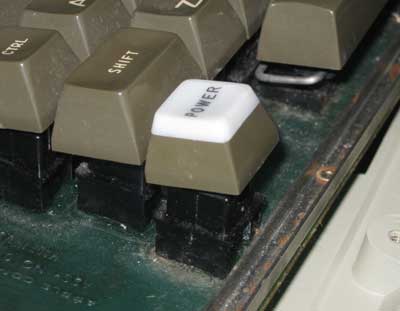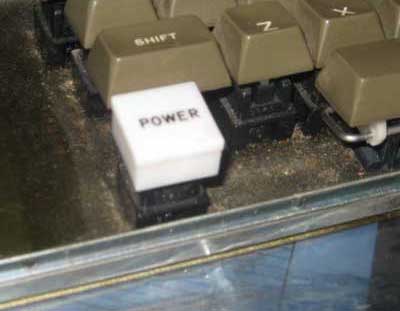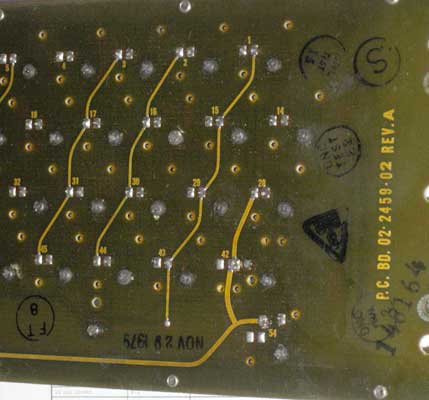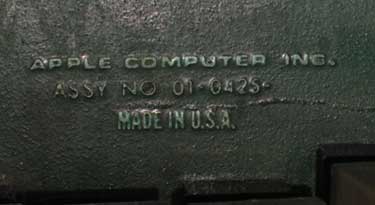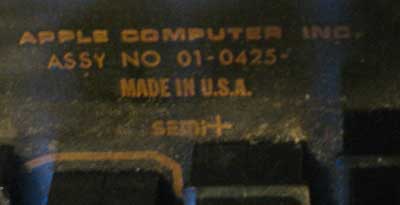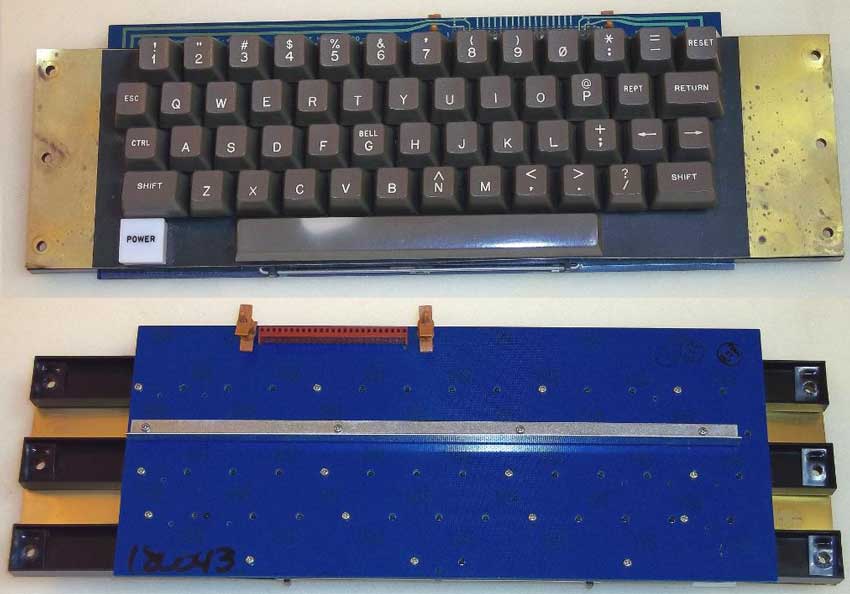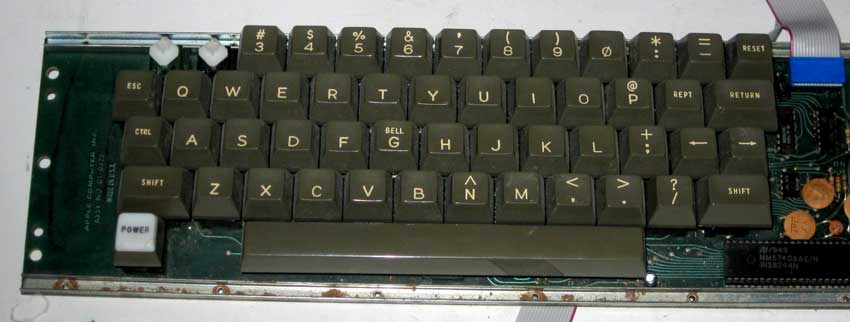
This
version was
introduced roughly around serial number 3000 of the Apple II
production. This version is electically identical to the first
version. However the MM5740 was moved and the exposed edge
connector
was removed. This is an apparent attempt to eliminate the problem
with static charges destroying
decoders. This change eliminated the extension that
extends into the area of the enclosure that is exposed when the cover
is removed.
